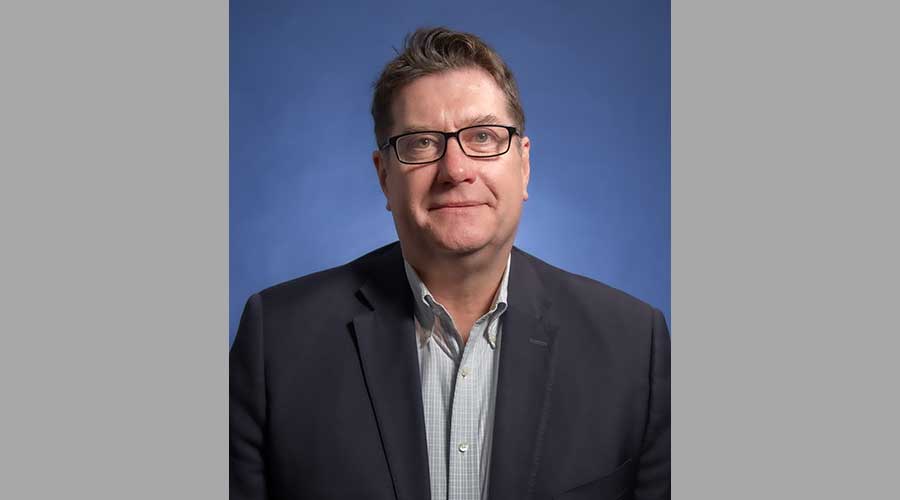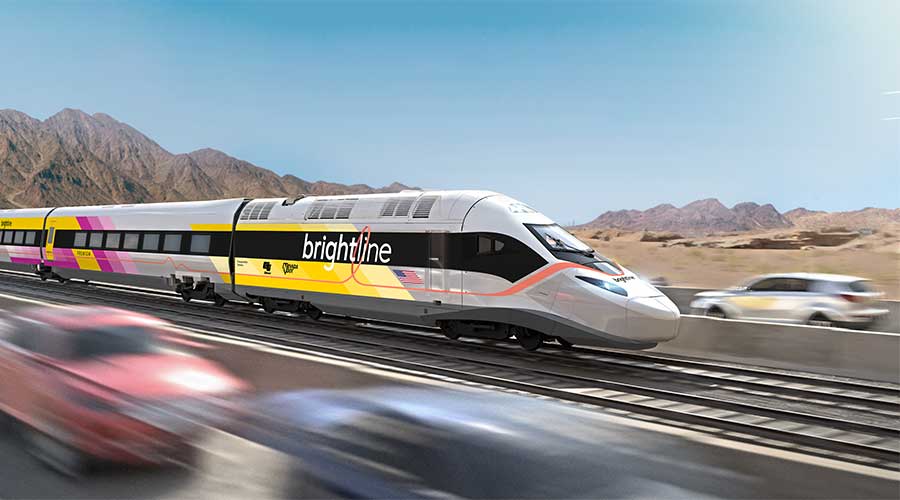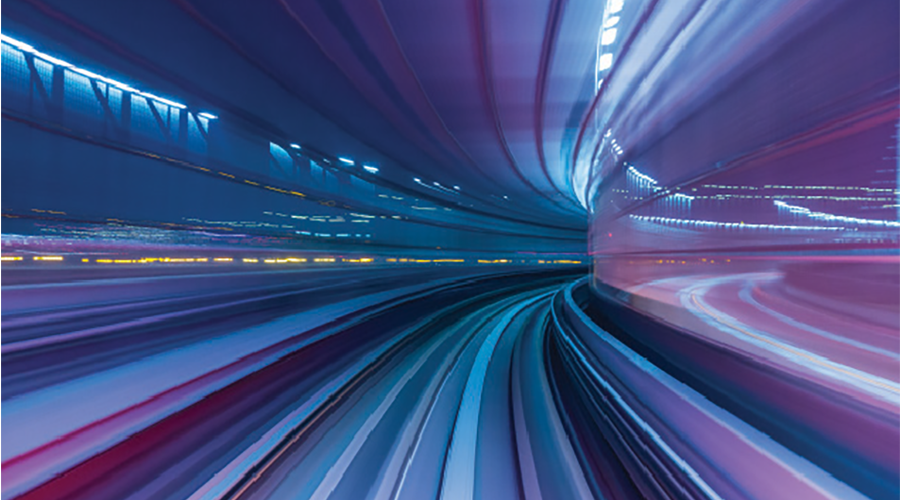Stay updated on news, articles and information for the rail industry
October 2014
Part 1 : Progressive Railroading's Passenger Rail at a Glance 2014: Preface
Part 2 : Progressive Railroading's Passenger Rail at a Glance 2014: Amtrak and transit agencies in California
Part 3 : Progressive Railroading's Passenger Rail at a Glance 2014: Transit agencies in Colorado and Florida
Part 5 : Progressive Railroading's Passenger Rail at a Glance 2014: Transit agencies in New York
Part 6 : Progressive Railroading's Passenger Rail at a Glance 2014: Transit agencies in Tennessee and Texas
Part 8 : Progressive Railroading's Passenger Rail At A Glance: Metrolinx in Ontario, Canada
Rail News: Passenger RailProgressive Railroading's Passenger Rail at a Glance 2014: Amtrak and transit agencies in California
Amtrak
The United States' intercity passenger railroad, formed in 1971.
Route miles: 21,300-plus miles intercity rail
Rolling stock: More than 400 locomotives and 1,500 rail cars, average age 26 years for both, plus 70 ACS-64 electric locomotives on order from Siemens, scheduled to be delivered through 2015
Annual ridership: 31.6 million (FY2013)
Number of stations: 500-plus
Major Amtrak-led projects include the Hudson Yards project, designed to preserve a possible pathway for future Hudson River tunnels from New Jersey to New York Penn Station, and the New Jersey high-speed rail improvement project to upgrade tracks, signals and electrical systems over a 23-mile section to improve reliability and increase maximum speed to 160 mph. Other major projects on Amtrak-controlled properties are taking place in Michigan, New York and Connecticut, led by the respective state departments of transportation.
CALIFORNIA
Bay Area Rapid Transit (BART)
Has operated heavy-rail service between the San Francisco peninsula and the East Bay since 1972.
Route miles: 104 heavy rail
Rolling stock: 669 revenue vehicles, 42 years old; plus 775 cars on order from Bombardier Transportation, to be delivered between 2017 and 2021
Average weekday ridership: 403,680 (FY14)
Annual operating cost: $598.4 million (FY15)
Annual capital cost: $711.5 million (FY15)
Number of stations: 44
This fall, BART plans to open the Oakland Airport Connector, a 3.2-mile automated guideway system that will replace the AirBART shuttle buses with a driverless, automated people mover system. The connector will include four three-car trains that will operate between the airport and Coliseum Station. The project costs $484 million; major contractors include a Flatiron/Parsons joint venture.
Construction is under way on BART's Warm Springs extension, a 5.4-mile corridor stretching from the Fremont Station south to the Warm Springs District of Fremont. The project was split to include two construction contracts: the Fremont Central Park Subway Construction, and the Line, Track, Station and Systems (LTSS). The subway was completed in 2012. The LTSS design-build work includes the final design and construction of the Warm Springs/South Fremont Station, the above-ground trackway, the tie-in at Fremont Station and the transit systems (traction power, electrification, train control and communications) for the entire extension. Scheduled to be completed in late 2015, the $890 million extension is being built by Warm Springs Constructors.
BART also is working on a 16-mile, six-station Silicon Valley project that will extend from the future Warm Springs Station in Fremont, running alongside Union Pacific Railroad right of way, and extending south into Santa Clara County, with stations in Milpitas, San Jose and Santa Clara. The project also includes a new maintenance and storage facility in Santa Clara, as well as the purchase of rail cars. The extension will be built in phases, with the first phase defined as the northernmost 10-mile, two-station Berryessa extension, which is scheduled to open in 2018.
Construction is under way on the eBART extension, which represents the first phase of a plan to extend rail service into East Contra Costa County. The line will feature diesel multiple unit trains. The $503 million project is scheduled to be completed in 2017. Major contractors include Stacy & Witbeck/Amoroso/MRS-JV, West Bay Construction, Lathrop Construction, Stadler and L.B. Foster. Contracts yet to be let include landscaping, final paving, sanitary sewer and solar.
Meanwhile, BART is preparing environmental documentation for the proposed Livermore extension, which would run 4.8 miles from the existing Dublin/Pleasanton Station within the I-580 freeway median to a new station in the vicinity of the I-580/Isabel Avenue interchange. The project will incorporate a bus-to-BART transfer and a network of express bus service to link BART to inter-regional rail service at the Vasco Road ACE Station, priority development areas in Livermore, and a possible offsite parking facility in the I-580 corridor at the foot of the Altamont Pass. The environmental work includes exploring three alternatives: an enhanced bus system, an express bus/bus rapid transit system, and a diesel multiple unit or electric multiple unit rail system.
In the meantime, BART officials have identified three top-priority projects that form the basis of the agency's core capacity program:
- BART's Fleet of the Future, a program to purchase 1,000 new rail cars to replace the existing fleet and meet future demand. The total cost for all the cars is estimated at $3.3 billion. BART has ordered the first 775 cars, which are scheduled to be delivered through 2021. BART and the Metropolitan Transportation Commission have identified funding for up to 850 cars, but the final 150 cars were unfunded as of August 2014.
- The Hayward Maintenance Complex, a new maintenance facility that would provide additional capacity to maintain and store the expanded fleet. The complex would cost about $432 million. Environmental clearance for the project has been approved and design work is under way.
- A train control modernization project, which would enable BART to increase train frequency and enter the expanded fleet into service. The project is expected to cost $700 million to $900 million. Once a contract is awarded, the modernization will take seven to eight years to complete.
Los Angeles County Metropolitan Transportation Authority (LACMTA)
Serves as transportation planner and coordinator, designer, builder and operator for Los Angeles County. Light-rail service launched in 1990; heavy-rail service, in 1993.
Route miles: 70.3 light rail; 17.4 heavy rail
Rolling stock: 164 light-rail vehicles, average age 23.5 years on the Blue Line, 13.3 years on the Green Line, 4.8 years on the Gold Line and 11.7 years on the Expo Line; plus 78 P3010 light-rail vehicles on order from Kinkisharyo, to be delivered between 2016 and 2020. LACMTA's fleet also includes 104 heavy-rail cars, average age 17.6 years
Annual ridership: 61.5 million light rail; 49.9 million heavy rail
Annual operating cost: $249.8 million light rail; $120.4 million heavy rail (FY15)
Annual capital cost: $37.2 million light rail; $47.2 million heavy rail (FY15)
Number of stations: 67 light rail; 16 heavy rail
In January, LACMTA broke ground on the $2 billion Crenshaw/LAX project, which calls for building an 8.5-mile light-rail line featuring eight stations serving the Crenshaw District, Inglewood, Westchester and surrounding areas.
Construction still is under way on the Exposition Transit Corridor Phase II, which will extend the Exposition Line to Santa Monica. The $925 million, 6.6-mile line will include seven stations, serving neighborhoods such as Century City, West Los Angeles and Santa Monica. Construction began in 2012 and is scheduled to be completed in 2015, with the line projected to open in early 2016.
Construction also is under way on the first phase of the Gold Line Foothill Extension, which will run 11 miles from the line's current terminus in Pasadena to Azusa. Construction on the $735 million project began in 2011 and is scheduled to be completed in fall 2015, with a projected opening in 2016. A second phase would run 12 miles from Azusa to Montclair.
LACMTA is building the $160 million Regional Connector, a 1.9-mile rail corridor that will extend from the Metro Gold Line Little Tokyo/Arts District Station to the 7th Street/Metro Center Station in downtown Los Angeles. The connector will enable passengers to transfer to the Blue, Expo, Red or Purple lines, bypassing Union Station. The underground alignment will include three stations and is scheduled to open in 2020.
In July, LACMTA awarded a $1.6 billion contract to a Skanska, Traylor and Shea joint venture to build the 3.9-mile first phase of the Purple Line subway extension. Scheduled to open in 2023, the project calls for extending the subway from its current terminus at Wilshire Boulevard and Western Avenue to Wilshire and La Cienega Boulevard in Beverly Hills, with three new stations. The first phase's total budget is $2.7 billion.
The agency also recently completed the Draft Environmental Impact Statement/Environmental Impact Report for the Eastside Transit Corridor Phase 2 project, which would connect to communities east of Los Angeles.
Sacramento Regional Transit District (RT)
Operates light-rail and bus service in the Sacramento area. Light-rail service launched in 1987.
Route miles: 38.6 light rail
Rolling stock: 76 light-rail vehicles, plus 21 Urban Transportation Development Corp. cars with 4 cars per consist, average age 18 years
Annual ridership: 13.5 million
Annual operating cost: $147.5 million (FY15)
Annual capital cost: $51 million (FY15)
Number of stations: 50
RT is building the South Line Phase 2 light-rail line, which will extend service 4.3 miles, linking the South Sacramento Corridor with downtown Sacramento. Service is scheduled to begin in 2016 to four new stations and a major transit center.
San Diego Metropolitan Transit System (MTS)
Provides public-transit service for central, south, northeast and southeast San Diego County. MTS operates the Trolley, the region's light-rail system, as well as bus services. Light-rail service launched in 1981.
Route miles: 53 light rail
Rolling stock: 52 SD100 light-rail vehicles, average age 21 years; 11 S70 LRVs, average age 9 years; 65 S70 LRVs, average age 2 years
Annual ridership: 39.7 million (FY14)
Annual operating cost: $53.3 million
Annual capital cost: $25 million
Number of stations: 53
In 2015, MTS plans to begin construction on the Mid-Coast Corridor, which will extend light-rail service from Santa Fe Depot in downtown San Diego to the University City community, serving major activity centers such as Old Town, the University of California, San Diego and Westfield UTC. The project will be funded through a half-cent sales tax administered by the San Diego Association of Governments and the Federal Transit Administration's New Starts program.
Other capital projects scheduled for FY2015 include the following (along with FY15 budget amount):
- install network switches and communication cabinets along the Green Line, $1.5 million
- install CCTV in trolley stations and facilities, $787,000
- install wireless nodes on the Blue Line to provide real-time downloads of onboard light-rail vehicle CCTV video images, $414,000
- upgrade the CCTV system, $100,000
- replace SD100 vehicle fleet, $9 million
- upgrade communication system for Green Line stations, $4.2 million
- replace DC feeder breaker for traction power substations, $1.7 million
- design second elevator at Fashion Valley trolley station, $1 million
- overhaul 104 coupler and buffer assemblies on SD100 vehicles, $1 million
- replace three grade crossings, $980,000
- rehabilitate stairway, ramp and platform pavers at Morena and El Cajon stations, $500,000
- upgrade crossing approaches and signals, and update drawings for MVE/Orange Line, $368,000
- install monument signs at some trolley stations on the Green Line, $300,000
- replace fire suppression system at San Diego State University Station electrical room, $250,000
- design El Cajon & 8th Street bridge abutment, $250,000
- replace crossing diamond at Broadway, $250,000
- install a catwalk for LRV fall protection, $200,000
- replace old rail lubricators on the Green and Orange lines, $185,000
- purchase additional brake tooling equipment, $160,000
- reconfigure seating for SD70 fleet, $60,00
- purchase tools to overhaul S70 center truck axle bearings, $50,000
- replace two switch machines and upgrade the circuit controllers at Baltimore junction, $46,000
San Francisco Municipal Transportation Agency (SFMTA)
Provides light-rail, historic streetcar and bus service in the San Francisco area. Service launched in 1912.
Route miles: 65 light rail; 19 streetcar; 9 cable car
Rolling stock: 149 light-rail vehicles, average age 14 years
Annual ridership: 45 million light rail; 8.3 million streetcar; 6.8 million cable car
Annual operating cost: $182 million light rail; $16 million streetcar; $52 million cable car
Number of stations: 9 light rail
Construction on the Central Subway is under way. Featuring four stations, the line will connect Chinatown to Union Square, the South of Market neighborhood and the Caltrain station. The line is scheduled to open in 2019.
SFMTA also is replacing and expanding its current fleet of 151 cars to meet Central Subway needs (24 cars), and accommodate current and future demand.
Part 1: Passenger Rail at a Glance 2014: Preface
Part 2: Passenger Rail at a Glance 2014: Amtrak and transit agencies in California
Part 3: Passenger Rail at a Glance 2014: Transit agencies in Colorado and Florida
Part 4: Passenger Rail at a Glance 2014: Transit agencies in Georgia, Illinois and Missouri
Part 5: Passenger Rail at a Glance 2014: Transit agencies in New York
Part 6: Passenger Rail at a Glance 2014: Transit agencies in Tennessee and Texas
Part 7: Passenger Rail at a Glance 2014: Transit agencies in Virginia and the state of Washington
Part 8: Passenger Rail at a Glance 2014: Metrolinx in Ontario, Canada


 2025 MOW Spending Report: Passenger-rail programs
2025 MOW Spending Report: Passenger-rail programs
 Gardner steps down as Amtrak CEO
Gardner steps down as Amtrak CEO
 Guest comment: Oliver Wyman’s David Hunt
Guest comment: Oliver Wyman’s David Hunt
 Women of Influence in Rail eBook
Women of Influence in Rail eBook
 railPrime
railPrime







